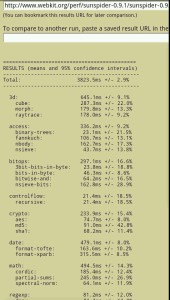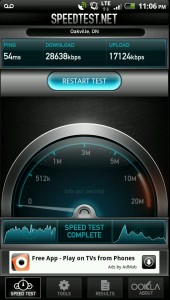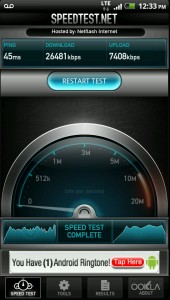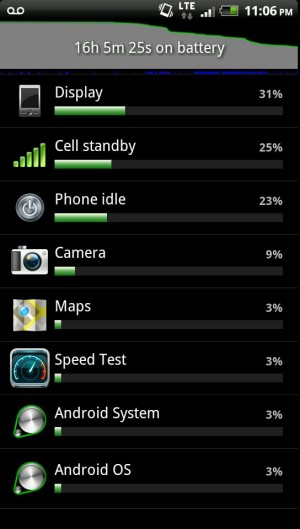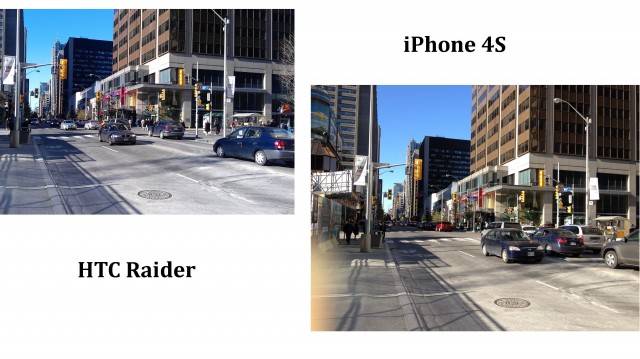
What does it take for a smartphone to stand out these days? Pixels? Check. Dual-core? Double check. Size? Indeed. It seems that the frontier has been paved, and then slaked over ad infinitum, until all hardware appears to perform the same function with a different veneer. It’s a glorious time to be a phone addict, but a frustrating time to be a phone buyer.
HTC wants to cement its place in the market (and they’ve done just that, if money talks) by catering to every possible demographic. The HTC Raider, also known as the “Holiday”, is the company’s first LTE-certified device and is available on both Bell and Rogers’ LTE networks in Canada. With their respective networks slowly rolling out over the next year, only those living in Canada’s biggest cities — and precious few among those — currently have access to LTE speeds.
Besides the pumped-up baseband, the Raider is a natural progression from the HTC Sensation, though it owes more to the EVO 3D in its design lineage. While it reuses the EVO’s APQ8060 processor and 1GB RAM, there is a new f/2.2 8MP camera with dual-LED flash and 1080p video capture, a 1.3MP front-facing camera, and 16GB internal storage, along with support for Bell’s 42Mbps HSPA+ network, and Rogers’ 21Mbps HSPA+ network and its nascent 75Mbps LTE deployment.
While the Raider is by no means a copycat product — one look at its glossy, angular design will tell you that — is merely adding LTE to a slightly upgrade Sensation or EVO 3D enough to bring users to the fold? Read on for our full review.
Specs:
– Android 2.3.4 with HTC Sense 3.0
– 4.5 inch 960×540 pixel qHD display
– 1.2Ghz APQ8060 Snapdragon processor w/ Adreno 220 GPU
– 1GB RAM, 16GB internal eMMC storage
– 8MP camera w/dual LED flash, f/2.2 aperture, 28mm lens, 1.3MP front camera
– 1080p video capture
– Bluetooth 3.0, WiFi b/g/n
– MDM9200 baseband supporting LTE (700/1700/2100MHz), HSPA+ (850/1900/2100MHz) and quad-band GSM/EDGE (850/900/1800/1900MHz)
– 128 x 67 x 11.2 mm, 177g
– 1620mAh battery
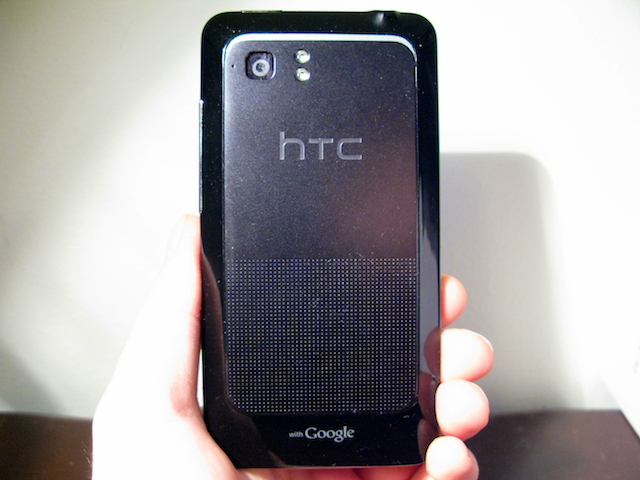
The Design Angle
We heard the word “monolithic” thrown around to describe Raider, which is apt when viewed head-on. The device is a no-nonsense slab of glossy, black plastic; the only colour to speak of is a tinge of silver on the backside speaker grill and the words ‘htc’ etched above the LCD and on the battery cover. Its screen edge gives way to a diagonal inward slide and a false sense of thinness. At 11.2mm, the Raider is not a thick phone, but HTC has wisely preempted any such claims by angling gently blooming out the back cover to meet the sides. This allows it to lie flat while giving the illusion it is floating.
As mentioned, HTC has gone with a glossy black polycarbonate which, along with the glass covering the LCD, is a fingerprint magnet. Thankfully the screen has very little bezel, edging the sides and the top as far as any device we’ve seen; the four capacitive touch buttons — Home, Menu, Back, Search — are nicely spaced below, and are given to accurate presses most of the time.
On the left side is a microUSB port, which doubles as a HDMI out if you use the right converter. The top houses the 3.5mm headphone jack and power button, which, along with the right-side volume rocker add some chrome to the all-black arrangement.
The battery cover is a single piece of sturdy aluminum which slides off with a satisfying motion. Underneath reveals a 1620mAh battery, SIM slot and empty microSD slot; the Raider comes with 16GB internal storage. The Raider has a masculine, tapered feel to it, and at 177g it’s hefty without being onerous. While we love the way HTC seems open to experimentation, the Raider may not suit everyone’s taste, and for both Rogers’ and Bell’s first LTE handset its design may be a tough sell.

The Display
To say that the Raider has an improved screen over the Sensation and EVO 3D is putting it mildly. At 4.5″ the pixel density is somewhat lower at 245ppi but text is sharper, viewing angles drastically better and colour saturation fantastic.
While the qHD resolution may be underwhelming to some, we had a great experience using the Raider. From typing on the excellent HTC keyboard to browsing web pages the screen was responsive, auto-brightness did not falter and colours seemed accurate, if a little muted. We compared the display to the HTC Amaze and found it to have better viewing angles and colour accuracy but lower maximum brightness and softer colours overall.

Performance
The HTC Raider is equipped with the same 1.2Ghz APQ8060 Snapdragon processor as the EVO 3D. While it can’t be said the third-generation chipset is slow, it is getting on in months and appearing worse for the wear against newer offerings from Samsung and Texas Instruments. The Adreno 220 GPU inside the SoC is capable of encoding and decoding 1080p video, and it performs decently in 3D games and browsing, but its limitations are becoming clearer as time goes on.
Benchmarking the Raider was a frustrating venture: scores seemed artificially low, as if someone muted one of the cores. The reality is that the APQ8060/MSM8x60 chipset has an asynchronous dual-core SMP micro-architecture, meaning that both cores can be clocked at different speeds and voltages depending on the workload. The problem with some benchmarks is that they don’t explicitly enable the second core, or clock it to the same speed as the main one. We ran the Quadrant benchmark a few times to test this theory, and while it did score above an equivalent 1.2Ghz single-core processor (the HTC Desire HD clocked to 1.2Ghz scores about 1400) with 1850 points, it’s not nearly as high as it should be.
We preferred to perform another range of benchmarks, ones that we know utilize both cores and give us repeatedly consistent results: Vellamo, Smartbench 2011 and CF-Bench.

As you can see, the Raider couldn’t keep up with the latest offerings from Samsung, and it was even bested by the six month-old HTC Sensation. We suspect this is because they have given the Raider’s chipset a more conservative scaling in order to save on battery life. More on that later.
During regular day-to-day tasks — reading emails, browsing the web, Twitter, Facebook, Angry Birds — the Raider is flawless. Indeed, we noticed no perceptible difference between it and the much faster Amaze. When situated in an area with LTE many functions of the phone that require an internet connection, like page rendering and file downloads, are many times faster than their HSPA+ counterparts. This makes the phone appear to be much faster than it is, as most devices these days are bottlenecked by high ping times and low throughput.
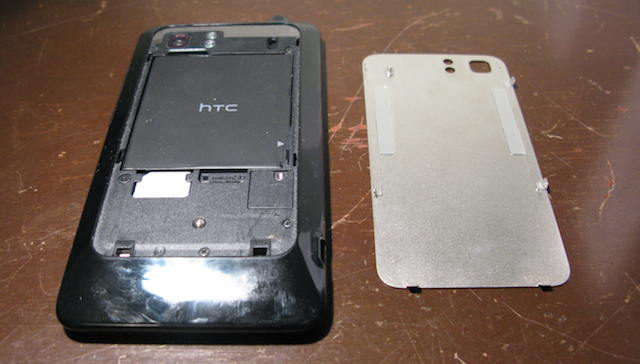
All About LTE
Is LTE the new status symbol?
More a philosophical argument at the moment than anything else, but can LTE really sell a phone? Sure, it’s fast — really fast — just look at our Speed Test results for proof. But in its infancy, the chips that supply connectivity to the devices, in this case the Qualcomm MDM9600, are power hungry to a fault.
The US Market has been dealing with this issue for months now. Since the launch of the HTC Thunderbolt in March, the handset, which uses the same LTE chip, has been plagued with battery issues. Same with the Samsung Droid Charge. Since the Raider is one of Canada’s first LTE devices (the other is the Samsung Galaxy S II LTE) and will soon be followed by the LG Optimus LTE, and the Galaxy Nexus, it’s more a warning sign than a heralding of a new era. It’s easy to achieve mind-blowing speeds of 25-30Mbps using the HTC Raider on either Bell or Rogers, but until the technology matures and vendors such as Qualcomm start integrating LTE basebands into their SoCs, battery life will continue to be a problem.
Here in Canada, however, we are lucky. Unlike on Verizon, which falls back to an agonizingly-slow 1x EVDO network outside of LTE coverage areas, both Bell falls back to 42Mbps HSPA+ and Rogers has 21Mbps HSPA+ sites to rely on. As a result, if battery life is getting you down, or you just don’t need the speed, you can easily turn off LTE in the settings.
But how is the speed?
Blazing by our battery concerns, using LTE for the first time on a mobile device is a religious experience. It provokes feelings of joy, alarm and vexation — “Is this really happening?!” — that only expands the more you use it. While we must preface this by saying that once LTE device start proliferating through the big cities — Toronto, Vancouver, Montreal, etc. — speeds will slow significantly, but both Bell and Rogers claim that users should expect between 12-25Mbps on a regular basis.
The differences were most obviously apparent when downloading large files. For example, when we first launched the included N.O.V.A. 2 demo we were asked to download 417MB of add-on data. Normally, an HSPA+ device would force us to download over WiFi, but the Raider took care of half a GB of data in less than five minutes. For those who opt to go with a 10GB plan, LTE may be able to replace home broadband for some people. Web pages load instantly, as ping times between the remote server and your phone are cut often in half. We experienced little discernible difference between using LTE and our home WiFi, which is connected to a 50Mbps Rogers cable box.
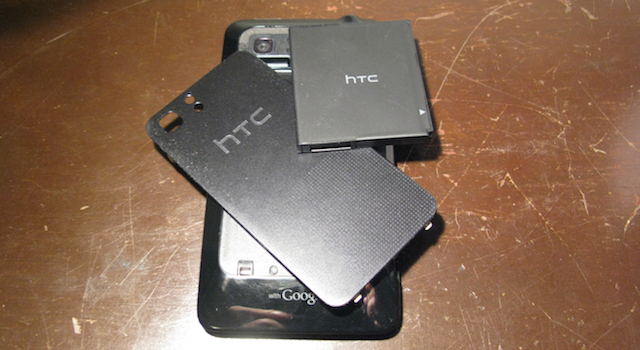
What about the caveats?
At the moment, Rogers, Bell and upcoming Telus LTE uses the AWS bands, so 1700 and 2100Mhz. These are high frequencies, so the waves are more prone to multipath and distortion. In layman’s terms, signals at high bands don’t travel through objects very well, hence the common complaint from WIND and Mobilicity customers that their devices suffer signal problems inside buildings. Next year, the government of Canada will auction off the highly-coveted 700Mhz spectrum, allowing mobile carriers to use those lower frequencies — the slower but more robust waves — to flesh areas that are less dense and harder for signals to reach.
We found that in certain areas downtown, inside a club for instance, our LTE signal would often drop to one or two bars. While we still achieved unbelievable speeds at those signal levels, and there will always be HSPA+ connectivity to fall back to, the lack of 700Mhz spectrum at this time is a concern. We also don’t know how the auction will play out. WIND and Mobilicity have appealed to the Canadian government for priority access to the valuable spectrum, claiming that allowing the incumbents, with their huge cash reserves, to bid in the auction will lead to “spectrum hoarding”. In 2008, during the last auction, the incumbents purchased enough of the AWS spectrum from Globalive and Dave Wireless (WIND and Mobilicity) that they are now able to use it for their initial LTE rollout.
The other implication of LTE is how quickly Android devices plough through data. 10GB may seem like a lot, but the average user is not going to pay $50 for their data. The more likely situation is that as LTE rolls out to more devices the price per GB will match what is currently offered, so most customers will end up with 500MB to 1GB of data. Considering how easy it is to eat into that allotment, it will be incumbent on users to monitor their bandwidth and not make any drastic changes to their usage.
But we want to know about the battery!
Ok, so the Raider has the same CPU as the EVO 3D, the same GPU as the Sensation and the same LTE baseband as the Thunderbolt. We found the former two to have decent battery life when used moderately — emails, browsing, games, Twitter, Facebook, etc. — but you’re likely not going to get more than a day from a single battery charge. The EVO has a bigger 1730mAh battery than the Raider’s 1620mAh, and we noticed a big drop-off in battery life when using LTE over the course of a day.
As previously mentioned, HTC has made improvements to the power management system inside the CPU cores of the Snapdragon, which is likely why we are benchmarking lower than the Sensation/EVO combo. As a result, LTE doesn’t create the battery black hole as it initially did on the Thunderbolt, which lasted around four hours on a single charge.
We were able to get well over a day of usage out of the Raider when connected to HSPA+, as we don’t get LTE where we live at the moment. Heading downtown for the day, we noticed a drop of 10-12% an hour, with the battery dying after eight hours of consistent usage. Downloading the aforementioned 417MB data bundle depleted 6% in less than five minutes, so it’s clear LTE is the driving force behind battery consumption. Since there is a toggle you can always disable it as you see fit, but be aware that you’re buying a very, very fast first-generation device, and with it comes battery concerns.
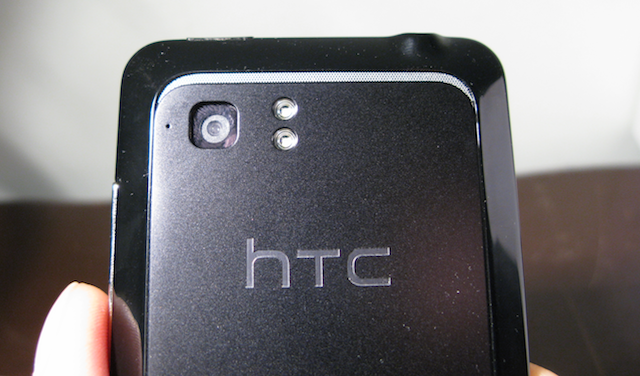
Cameras
The Raider joins its Amaze cousin and the remaining bevy of new HTC devices with its low-aperture, high-speed f/2.2 camera sensor. While there is no dedicated camera button to speak of, HTC has done a great job simplifying its camera UI, and we had a great experience taking photos with the Raider.
Indoor macro shots came out well, with vivid detail and little software compression. We found the dual-LED flash a little underpowered, unable to light up a calendar from only a couple feet away. Photo fidelity, however, is discernibly improved over the HTC Sensation. The Raider is constantly caching the image it sees through the lens, so there is no delay between pressing the shutter button and taking the shot. On average, due to the constant caching and almost instant auto-focus, we found the Raider takes faster shots than the iPhone 4S. As you can see from the shot below, colours on the Raider seem a bit more saturated and details a bit sharper — too sharp, in fact — but the quality holds up pretty well to the iPhone 4S.
The updated camera UI, which was introduced with the T-Mobile myTouch 4G Slide, incorporates two-touch scene selection: panorama, HDR, burst mode, etc. The options are granular and varied for a phone camera, allowing the specific adjustment of ISO, white balance, exposure, contrast saturation and sharpness. Modes like “Vintange” or “Depth of field” play software tricks on the original image, and fit right in with the popular Instragram or Picplz filter aesthetic, but in our opinion add too much noise to be used for anything but a web clip. Noise is an issue in regular shots, too, especially in low-light areas: clearly the low aperture, while allowing for more light to enter the lens, is not able to overcome the high ISO needed to optimize the detail in the shots. Outdoor photos fare better, and the Raider should be sufficiently capable to replace your point-and-shoot for landscape shots.
The 1.3MP front facing camera is, to be expected, adequate for the occasional vanity photo or Skype call. We are happy to report that the Raider supports video calling over all the major conferencing apps, including Google Talk.
As expected, the Raider also shoots 1080p video at 30fps, like its Amaze cousin and the Sensation before it. HTC has made steady yet subtle improvements not only to the UI since it launched the Sensation, but to the video recording quality. With more light comes a smoother picture and less noise, which is clear when looking at the daytime results from the Raider. Indoor video fares slightly worse, with a lower frame rate and a pronounced fuzziness. Few cameras are adept at shooting under poor lighting, and in this situation the Raider does a pretty good job, though we noticed smoother frame rates with the iPhone 4S and Galaxy S II under the same conditions. We ran into problems when adjusting from one lighting source to another — when moving from inside to out- or vice-versa — as the frame rate slowed right down, and the lens lost focus. The Raider has trouble readjusting its focus on the fly, so you’ll occasionally have to touch the screen to manually reassert your depth of field. As you can tell from the sample video, even in stereo the quality of the sound picked up by the microphones is low, though extremely sensitive: the construction noise we heard was not nearly as tinny as it appears on video.
One of the benefits to owning a modern Android smartphone, especially one with LTE connectivity, is its ability to upload directly to YouTube over the air. There is a very simple video trimmer included, and for photos a simple editor allows for cropping, rotation and applying basic effects before sharing.
Sense UI: haven’t I seen this before?
We won’t touch too deeply on the Raider’s software. It runs Android 2.3.4 with Sense UI, like the Sensation and EVO 3D. There have been no additions in functionality to the OS in nearly a year, and for the most part it is a stable, attractive and functional Android skin. Some people claim it is getting long in the tooth next to the customizable and lightweight TouchWIZ 4 from Samsung. We still like it better than offerings by Motorola and Sony Ericsson, though admittedly they have improved substantially in the past few month while HTC has stayed rather static.
It’s curious why HTC has not updated their skin to Sense 3.5 which debuted earlier this year with the Rhyme and will be present in the upcoming Rezound. There is a consistency to the UI that we appreciate, especially in first-party apps such as Messages, Email and Watch. But the effect is negated, and largely blown away, when you start adding dozens of third-party apps that are designed in all manner of ugly ways.
Bell has updated the game demos included on the Raider: N.O.V.A has been replaced by its sequel, and so has Let’s Golf. They are still just demos, and cannot be uninstalled but now offer an in-app purchase of $5, or to “rent” the game for $3/month. We realized that in addition to Bell’s PVR, TV & Radio and Tunes & Apps, along with the requisite Polaris Office, there are three GPS Navigation apps on the Raider. Google offers their Navigation add-on to the official Google Maps which is fantastic and provides turn-by-turn directions for free, including traffic alerts, walking and transit directions. Also present is Locations, HTC’s service which, after a 30-day trial allows you to purchase it for $29.98, or $19.98 for one-year unlimited usage. It’s good, with truer 3D landscapes powered by Route66, but it’s basically the same thing. Then there is Bell’s included TeleNav-powered offering, which like Locations is perfectly capable but superfluous. We think it’s disingenuous for Bell to preload their GPS Navigator, which costs $50, when Google’s Navigation is available at no cost.
There are some decent power-saving options available to the Raider. Power Saver restricts the ability of certain phone features such as background data, Bluetooth and WiFi when battery levels drop below a pre-determined point. Sleep Mode emulates existing third-party solutions such as CyanogenMOD and JuiceDefender by turning off background data between certain hours or only when the screen is turned on.
The four-shortcut Sense UI is still going strong, and really is the fastest way to get into the camera app, or to check an unread email. As usual, HTC includes FM radio and Flashlight apps, and a suite of social media services which are better served by downloading their respective official apps from the Marketplace. HTC excels in making their native apps simple, but aside from occupying the home screen with flashy garish widgets, they don’t serve much purpose anymore. We’d rather the company focus its attention on improving performance and making Sense more lightweight: the 3D animations, transitions and showmanship adds little to the experience and strains the processor and battery.
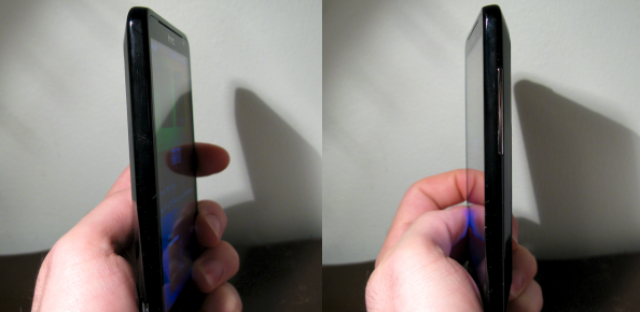
Upgrade path
At this point, with Android OS 4.0 Ice Cream Sandwich looming so close, releasing a phone with Gingerbread is a liability. HTC has confirmed that they are looking into upgrading their 2011 smartphones to ICS, and there is no reason to believe the Raider is not on that list. It is not known how the four capacitive touch buttons at the bottom of existing Android devices will be incorporated into Android 4.0, but there is no doubt the Raider is capable of running it without issue.
As for hacking/modding, the bootloader on the Raider is locked, and we have no idea if or when HTC will allow users to unlock it through their HTCDev portal.
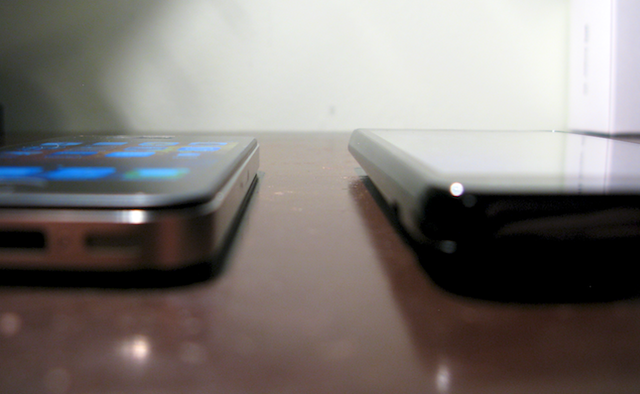
Closing Thoughts
The Raider is likely the first of many LTE offerings by HTC. In this case, it is the first LTE device on the market, and good thing too, since Samsung and LG will be competing very soon.
Besides LTE, the Raider is a capable beast, a monolithic artifact outdated before its time. Its tapered design coupled with glossy plastic and aluminum backing harkens back to the Windows Mobile-powered HD2. Some users will find it uncomfortable to hold; others too plain; more not different enough to justify an upgrade. The Raider does everything right, and yet we can’t help but yearn for the second-generation LTE devices that will inevtiably arrive in six months, with power-efficient designs and improved battery life. We can’t help but be disappointed that in light of the LG Optimus LTE and Galaxy Nexus the Raider does not have an HD screen.
Its one virtue — and gosh is it ever — is the ability to blow all other smartphones out of the water when it comes to throughput. We like the Raider the way we love comfort food: it’s consistent, stable and comfortable. Fans of HTC on Rogers or Bell should have no problem justifying its purchase. For the rest, wait a few weeks while we sort out which LTE handset is king.
Rating: 8/10
Pros:
– Streamlined, tapered design is attractive and functional
– LTE speeds are mind-blowing
– Camera takes wonderful shots, instantly
– Decent performance in apps and games
– Sturdy construction
– Big, beautiful qHD display
– Good battery life when connected to HSPA+
Cons:
– Poor battery life when using LTE
– Sense UI badly needs an update
– Some issues with connectivity
– Poor indoor video quality/frame rates
– Only iterative upgrades from Sensation/EVO 3D besides LTE

